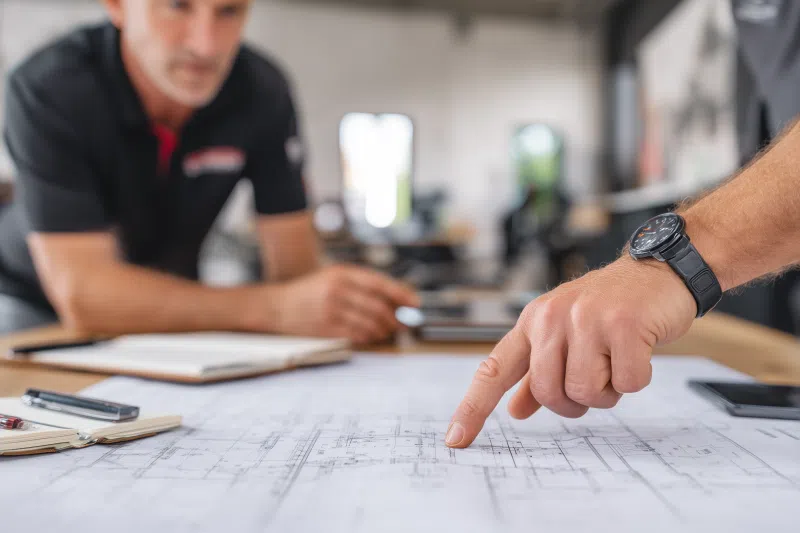Wind Mitigation Inspections
Take measures to protect your home from wind and get money back. The team at Brunt Insurance is ready to help you upgrade and save.

PROTECT YOURSELF AND SAVE
Why You Need A Wind Mitigation Inspection
After the hurricanes of 2004, the Florida legislature established guidelines to help homeowners reduce their homeowner’s insurance premiums based on their home’s ability to withstand a hurricane. The goal was to offer incentives to Florida homeowners who invested in mitigation techniques, upgrades, or retrofits to make their home stronger.
In return, Florida homeowner’s insurance companies would give monetary incentives or discounts for Florida homeowners who incorporated the latest storm damage mitigation products and technologies in their homes.
Key Components of Wind Mitigation Inspections
Year Built and Number of Stories
Important in determining which building code the home complies with. The more current the building code, the more stringent the requirements for hurricane mitigation/protection it may have.
Roof Covering
The most important and overlooked element that governs the losses experienced in hurricanes.
Roof Deck Attachment
How the roof deck is attached to the trusses/rafters plays an important role in its ability to withstand windstorms.
Roof to Wall Connection
Helps establish the continuous load path from the roof through the walls and into the ground.
Roof Shape
Definition of Hip roof is a hip-shaped roof with NO OTHER ROOF SHAPE greater than 50% of ANY major wall length.
Gable End Bracing
Must be braced to meet the 2001 Florida Building Code.
Secondary Water Resistance
Must have a self-adhering modified bitumen roofing underlayment applied directly to the roof sheathing of foam if foam is sprayed from inside the attic.
Opening Protection/Shutters
Every opening, including skylights and gable vents, must be protected to receive a hurricane rating.
Wall Construction Type
Important when assessing risk as certain wall structures are stronger and, therefore, have less risk than others.
Key Components of Wind Mitigation Inspections
Year Built and Number of Stories
Important in determining which building code the home complies with. The more current the building code, the more stringent the requirements for hurricane mitigation/protection it may have.
Roof Deck Attachment
How the roof deck is attached to the trusses/rafters plays an important role in its ability to withstand windstorms.
Roof Shape
Definition of Hip roof is a hip-shaped roof with NO OTHER ROOF SHAPE greater than 50% of ANY major wall length.
Secondary Water Resistance
Must have a self-adhering modified bitumen roofing underlayment applied directly to the roof sheathing of foam if foam is sprayed from inside the attic.
Wall Construction Type
Important when assessing risk as certain wall structures are stronger and, therefore, have less risk than others.
Roof Covering
The most important and overlooked element that governs the losses experienced in hurricanes.
Roof to Wall Connection
Helps establish the continuous load path from the roof through the walls and into the ground.
Gable End Bracing
Must be braced to meet the 2001 Florida Building Code.
Opening Protection/Shutters
Every opening, including skylights and gable vents, must be protected to receive a hurricane rating.
IS WIND MITIGATION WORTH IT?
Cost Breakdown
As Florida natives, we’re very familiar with wind mitigation inspections and can help you understand what your home needs to meet legislation requirements so you receive homeowners insurance discounts. Often the necessary upgrades are often simple and cost-effective. If your home is in a high-velocity zone, you might even have some protection already in place.
Examples of mitigation upgrades include:
Additional protection for one or more openings
Bracing gable ends
Installing SWR’s during re-roofing projects
Upgrades can pay for themselves
In almost all cases, the cost of mitigation upgrades is less than the discount a homeowner may receive when the savings is calculated over the 5-year validity period of the inspection report.
Based on the year of your home, you may be required to get a 4-point inspection. Most inspection companies will bundle these services together for competitive rate.
Home & Flood Insurance Carriers
These are the companies we work with to create our homeowners coverage policies.
Family First
Federated National
Prepared Insurance
Prepared Flood Insurance
Security First
Universal Prop & Casualty
Wright Flood/Fidelity
Bass Underwriters
SafePoint
Citizens Property
Universal NA Quoting
Mount Beacon
Olympus
Tower Hill
Anchor
UPC Insurance
EPIC
American Integrity
Geovera
ASI
Get in Touch and Get A Great Policy
Our team is standing by to answer any questions you have. Call or click today and find out how easy it is to protect your home or business.
Contact Us